
Ehomaki
Ehomaki is a long and thick sushi roll that we enjoy during Setsubun, a Japanese festival marking the transition from winter to spring. Bring good fortune with my modern version of homemade ehomaki that uses seven simple fillings!
Ingredients
For the Fillings
- 1 Japanese or Persian cucumber
- 1 Tamagoyaki (Japanese Rolled Omelette) (I made my 3 Ingredient Simple Tamagoyaki; or make Japanese Sweet Rolled Omelette)
- 4 cooked shrimp (large; deveined, pressed to straighten, and boiled with the shells on; see below for details)
- 1 unagi (freshwater eel) fillet (grilled)
- 1 Simmered Shiitake Mushrooms (prepared 1–2 days in advance; see how to make it with my Simmered Shiitake Mushrooms recipe)
- 6 oz sashimi-grade salmon (block; cut lengthwise into 8 long strips about ½-inch thick)
- 6 oz sashimi-grade tuna (block; cut lengthwise into 8 long strips about ½-inch thick)
For Rolling
- 4 cups sushi rice (cooked and seasoned) (from 1½ cups or 2 rice cooker cups of uncooked Japanese short-grain rice; you can use my recipe How to Make Sushi Rice)
- 4 sheets nori (dried laver seaweed)
Instructions
Before You Start
- Make Ahead (Optional): 1–2 days in advance, I prepare the Simmered Shiitake Mushrooms and 3 Ingredient Simple Tamagoyaki and store them in the fridge until ready to use. For the cooked shrimp, I devein shell-on large shrimp (see How to Devein Shrimp), push their backs to straighten, then quickly boil them in 2 cups water with a splash of sake until their color changes. I peel the shells afterward.
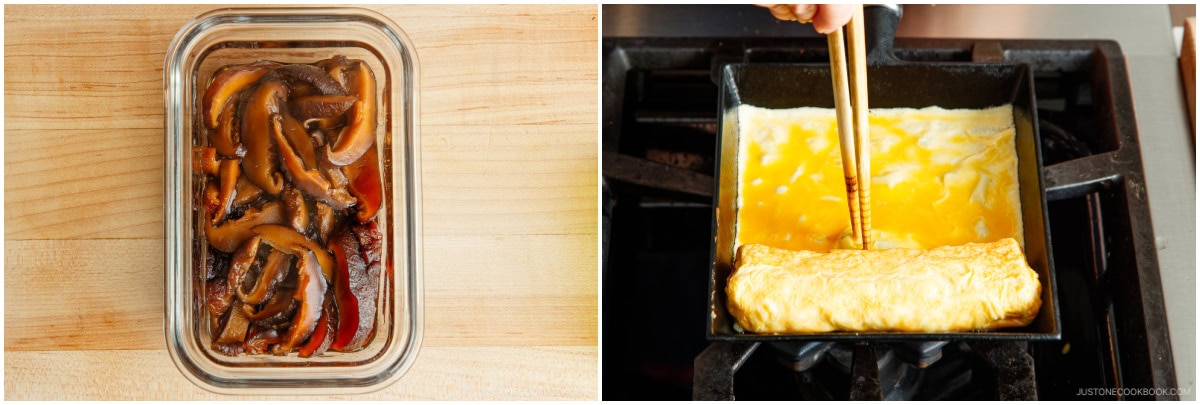
- The sushi rice takes about 90 minutes to make. Please note that 1½ cups (300 g, 2 rice cooker cups) of uncooked Japanese short-grain rice yield 4⅓ cups (660 g) of cooked white rice. You can follow my How to Make Sushi Rice recipe for step-by-step instructions on how to cook the rice and add the sushi seasoning. Now, gather all the ingredients.
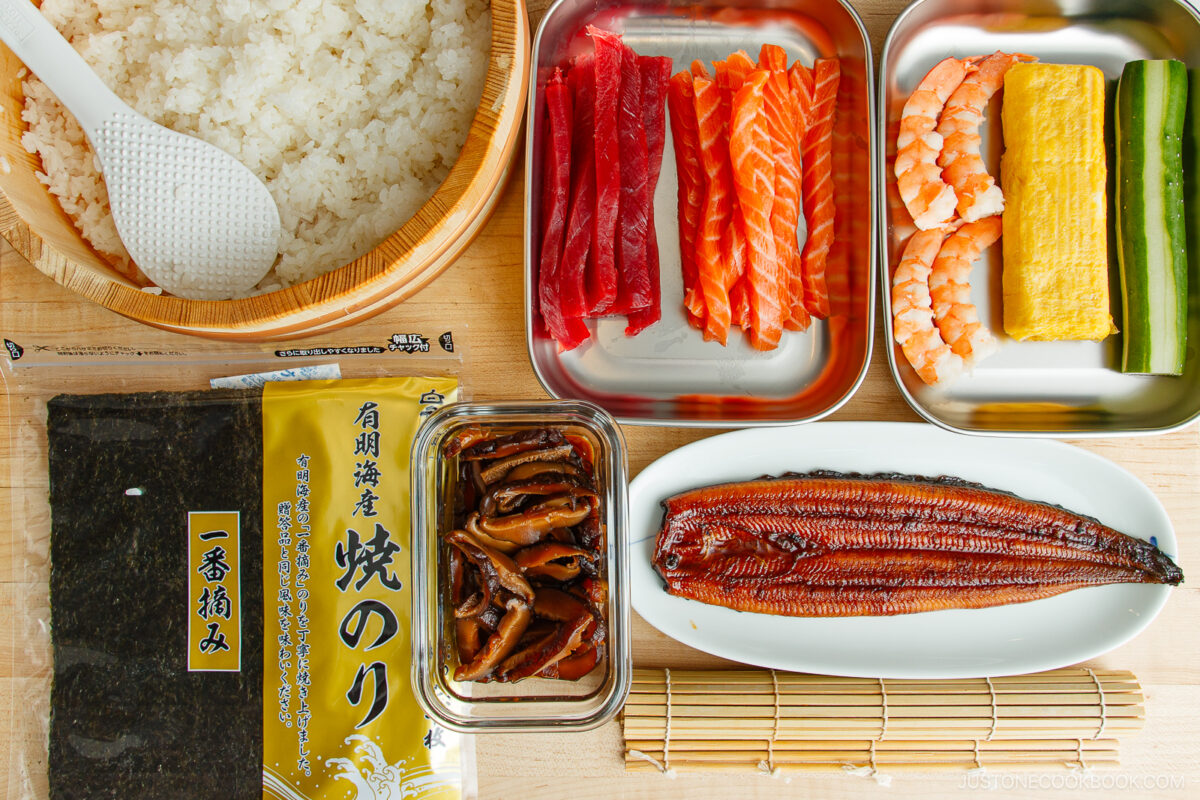
To Prepare the Ingredients
- Cut off the ends of 1 Japanese or Persian cucumber. (Optional: You can peel the skin alternately to create stripes.) Then, cut it lengthwise in half, then lengthwise again into quarters.
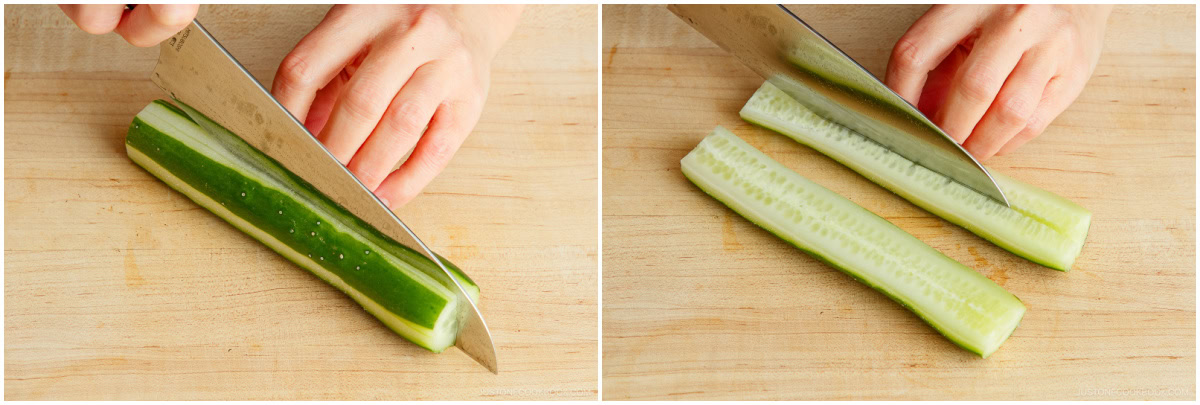
- Remove the seeds by slicing them off with a knife. Then, cut the quarters lengthwise in half again. You should now have 8 cucumber sticks.
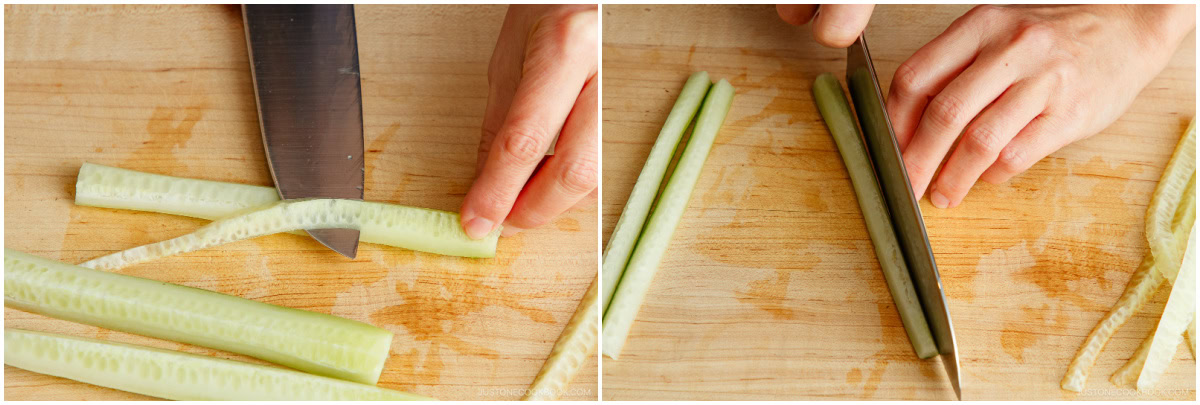
- Cut 1 Tamagoyaki (Japanese Rolled Omelette) lengthwise into 8 strips.
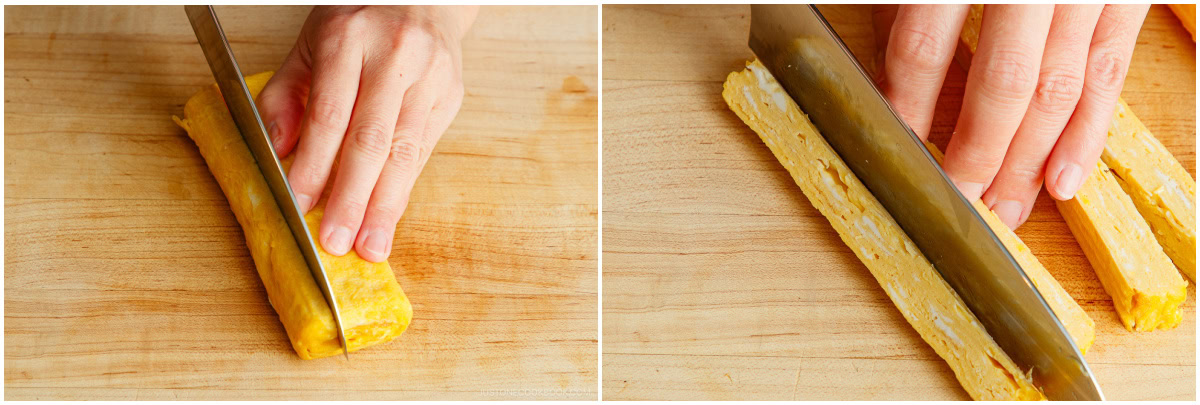
- Cut each of the 4 cooked shrimp in half lengthwise.
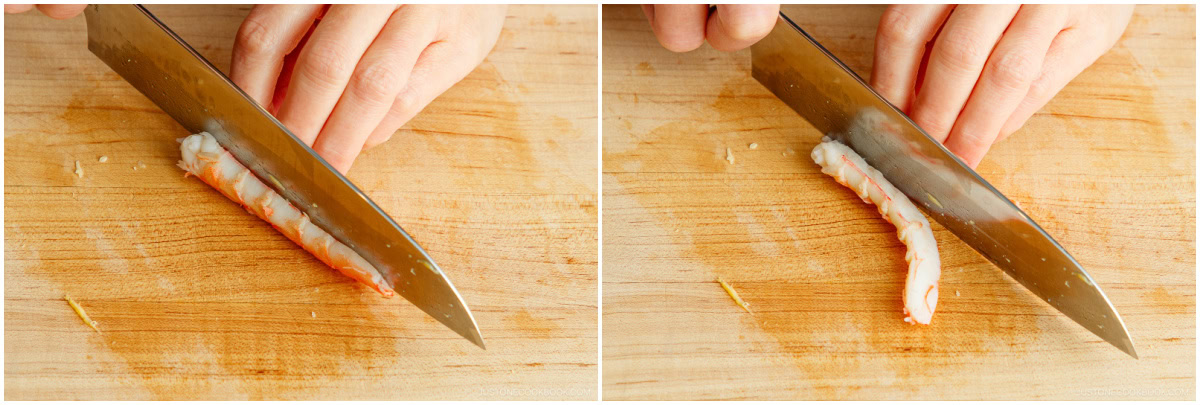
- Cut 1 unagi (freshwater eel) fillet lengthwise into 4 strips.
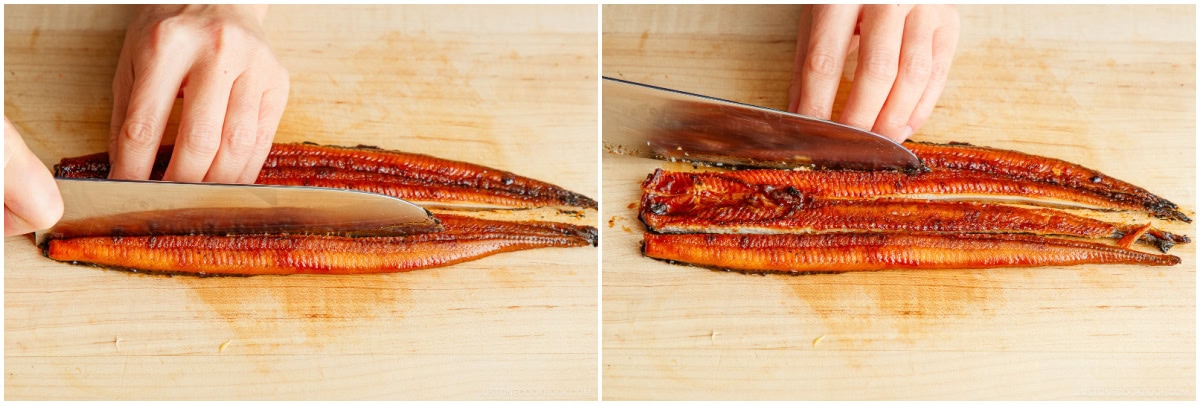
To Add the Sushi Rice and Fillings
- Make one roll at a time. Set the bamboo sushi mat on a work surface with the slats running sideways (horizontally) for rolling. Place 1 nori sheet shiny side down on the mat. Leave about 3–4 slats visible on the edge nearest you. Moisten a 1 cup measure in a small bowl of water, shake off the excess, and scoop 1 cup sushi rice. Tip: For thick sushi rolls, we typically place the nori sheet's short side along the mat's bottom edge closest to you so there's more room to roll the ingredients. When we serve the ehomaki uncut, we often roll it with the long side closest to you so it's thinner and easier to eat. You can decide which way to position the nori depending on if you serve the rolls whole or sliced.

- Place the measured sushi rice in the middle of the nori sheet. Gently spread the rice with your fingers, leaving an empty strip of nori across the bottom ½ inch (1.5 cm) and top 1 inch (2.5 cm). Don't mash the rice, and make sure to spread it evenly so the roll isn't bumpy. Tip: Instead of using your fingers, you can use a rice paddle. Hold it vertically to avoid mashing the rice.
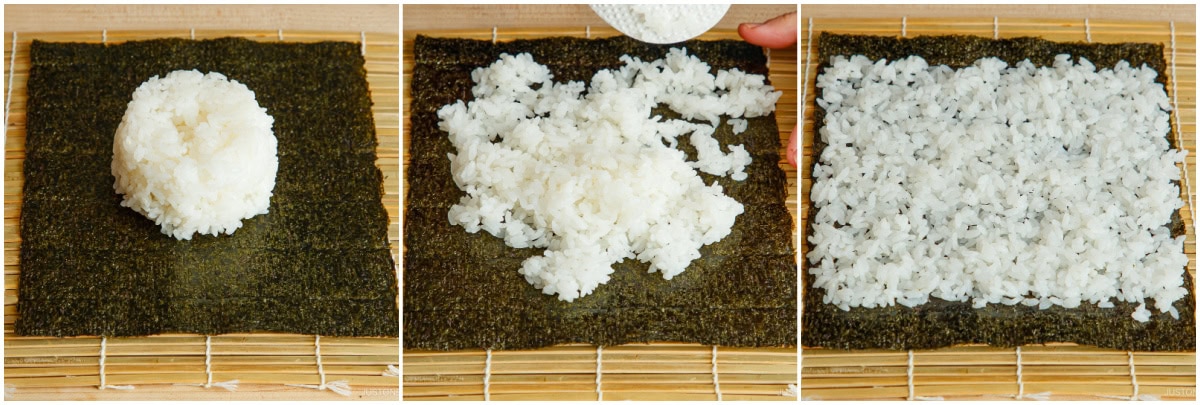
- Leave a ¼ inch strip of rice at the bottom, then add the first layer of fillings, beginning with the easy-to-hold ingredients. Start with 2 cucumber sticks, lining them up across the width of the nori sheet. Then, place the 1 strip unagi, 2 strips shrimp, and 2 strips tamagoyaki, turning the shrimp and unagi on their side edge to keep the first layer compact. Finally, add a portion of the simmered shiitake mushrooms last so they won't fall out when rolling. Tip: Keep in mind what the filling will look like after it's rolled up. I try my best (but don't always succeed) to arrange the ingredients so similar colors are not next to each other.
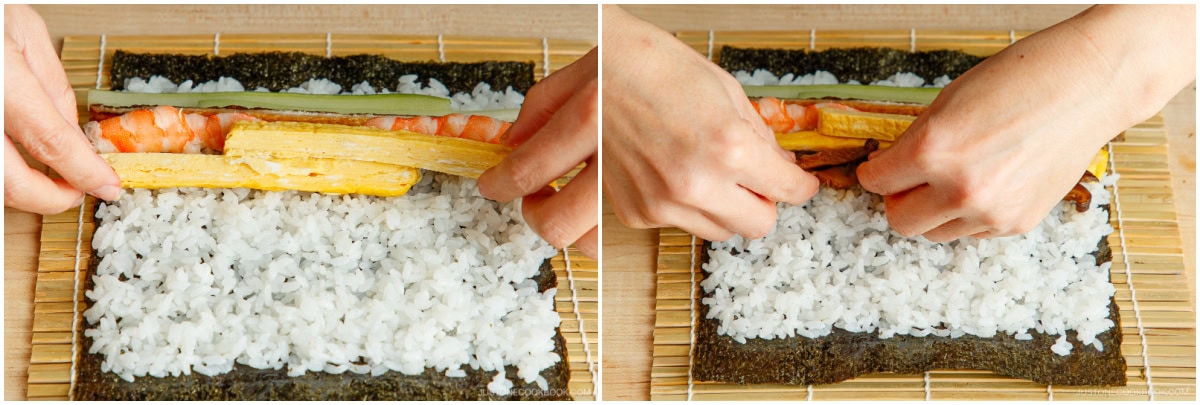
- For the second layer, place 2 strips sashimi-grade salmon and 2 strips sashimi-grade tuna on top of the cucumber and unagi.
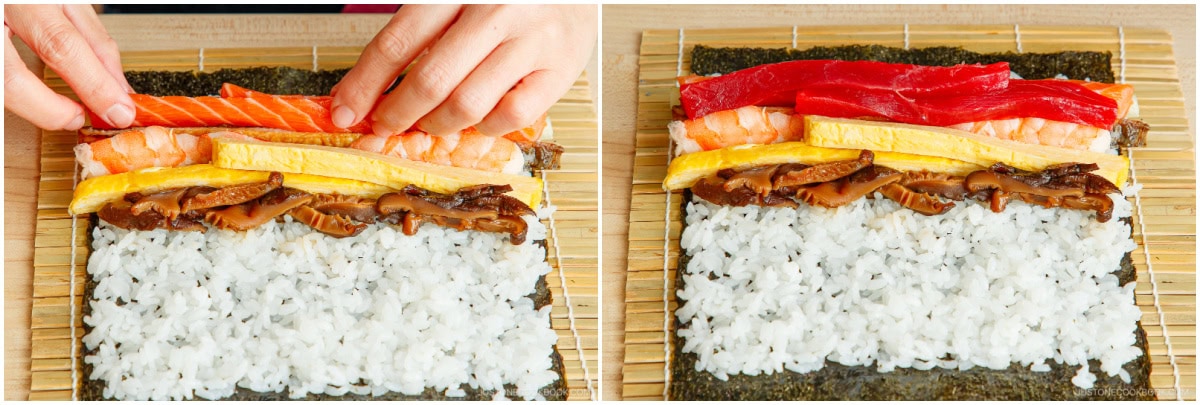
To Roll the Ehomaki
- Grab the bottom edge of the mat and nori sheet with your thumbs and index fingers. Tightly roll the bottom edge over the filling while holding the ingredients in place with your other fingers. Lift away the mat slightly as you roll firmly until the rice at the bottom and top edges meet.
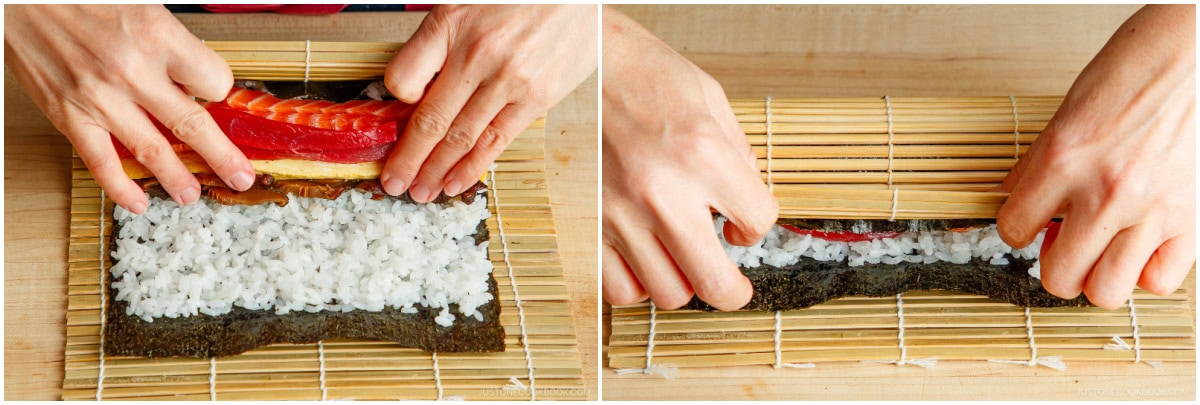
- Press it through the mat to tighten the rice and filling.
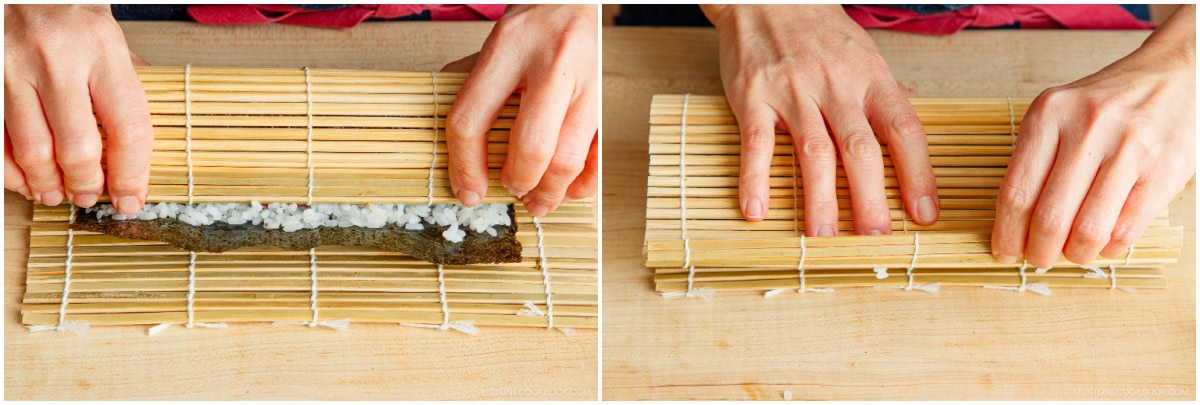
- Now, hold the lifted edge of the mat with one hand and pull it forward as you use your other hand to finish rolling the rest of the way. Then, release the edge of the mat and press the roll through the mat to correct its shape. Continue rolling the rest of the ehomaki.
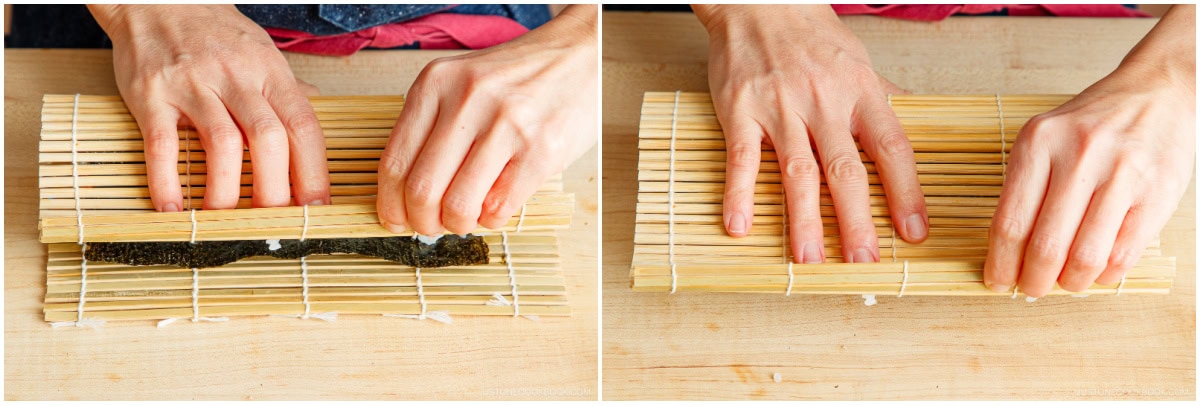
To Serve
- Optionally, you can cut off the ends of the roll for a neater presentation.
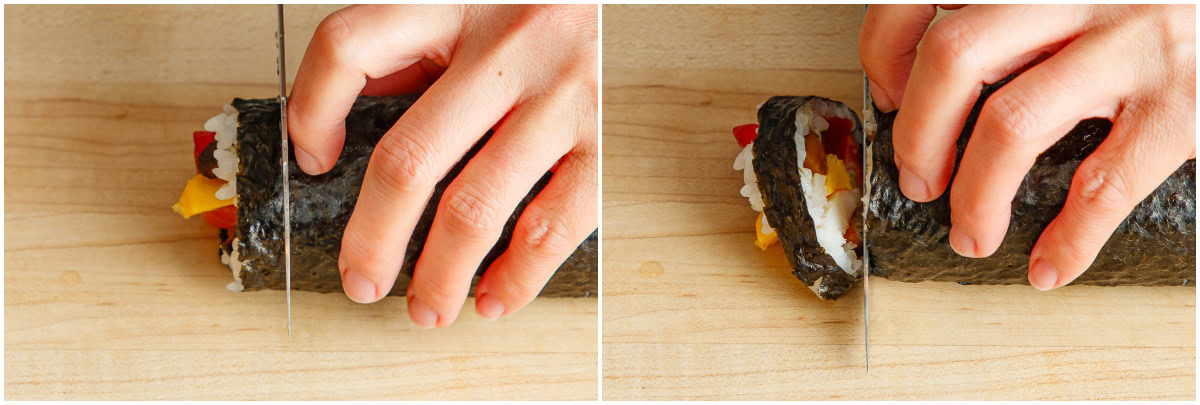
- Enjoy the ehomaki uncut on Setsubun! You can also slice and enjoy these sushi rolls anytime of year.
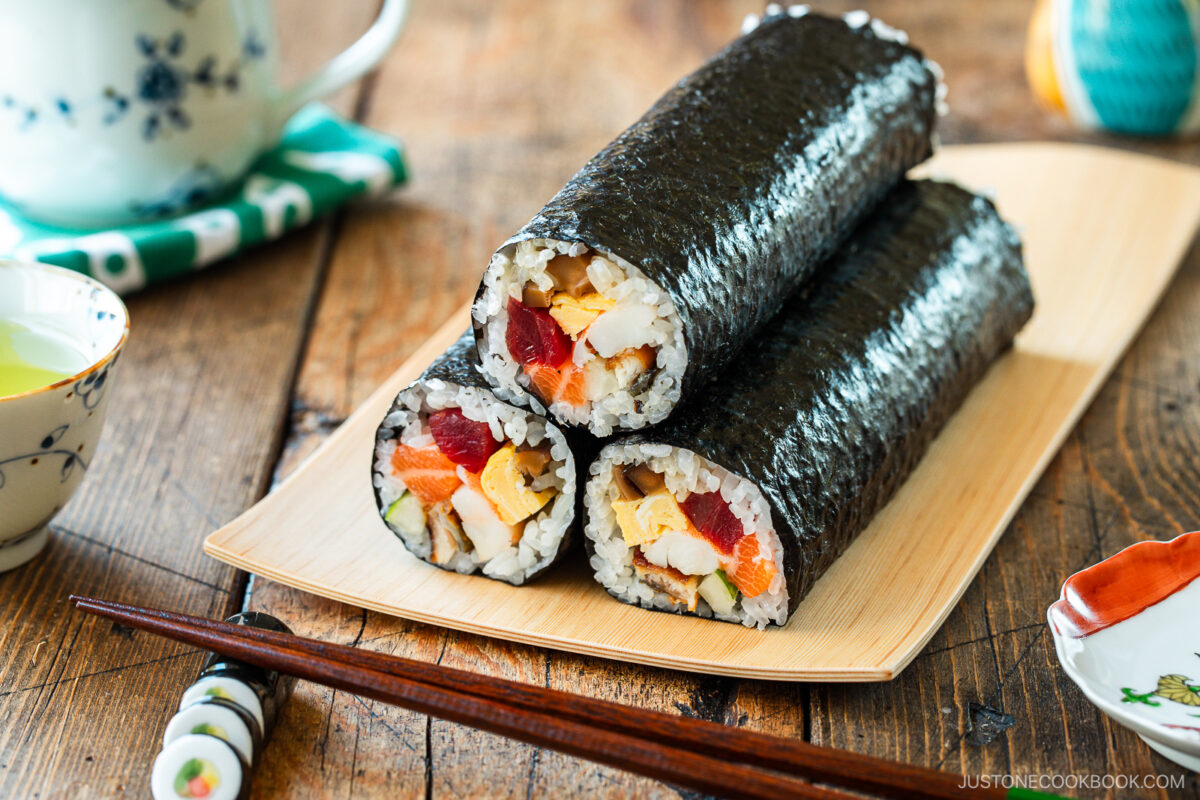
To Store
- It‘s best to enjoy ehomaki on the same day you make them. Rice gets hard and dry in the refrigerator, so it's not ideal to store them overnight. If you really want to keep ehomaki in the refrigerator, my recommendation is to cover them with plastic and then with a thick kitchen towel, so the rice will stay cool and safe, but not get cold.
Nutrition
Calories: 520kcal, Carbohydrates: 44g, Protein: 40g, Fat: 18g, Saturated Fat: 6g, Polyunsaturated Fat: 2g, Monounsaturated Fat: 5g, Trans Fat: 1g, Cholesterol: 269mg, Sodium: 480mg, Potassium: 653mg, Fiber: 3g, Sugar: 5g, Vitamin A: 3151IU, Vitamin C: 7mg, Calcium: 65mg, Iron: 2mg